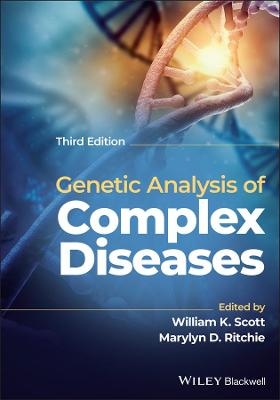
Current Developments in Anthropological Genetics
Kluwer Academic/Plenum Publishers (Verlag)
978-0-306-40390-3 (ISBN)
- Titel ist leider vergriffen;
keine Neuauflage - Artikel merken
I: Historical Approaches to Anthropological Genetics.- 1. Voices of Our Ancestors.- 1. Introduction.- 2. Basic Questions.- 3. Methodological Approaches.- 3.1. Aging and Sexing of Skeletal Material.- 3.2. Improved Life Tables.- 3.3. Locational and Distributional Aspects of Prehistoric Populations.- 3.4. Social Stratification.- 3.5. Signal vs. Noise.- 3.6. On the Possible Action of Natural Selection, and Population Control Mechanisms.- 3.7. General Results.- 4. Implications for Modern Genetic Studies.- 5. Summary and Concluding Remarks.- References.- 2. Historical Demography: Applications in Anthropological Genetics.- 1. Introduction.- 2. Data Sets.- 3. Research Problems.- 3.1. Population Structure.- 3.2. Selection.- 4. Alternative Approaches for Historical Populations.- 5. Summary and Conclusions.- References.- II: Evolutionary Perspectives.- 3. Perspectives on the Theory of Social Evolution.- 1. Introduction.- 2. Theory in Sociobiology.- 3. Inbreeding and Relationship.- 4. Gene Frequency Change.- 5. Hamilton's Inequality.- 6. Nonlinear Relationships between Resources and Fitness.- 7. Population Structure and Group Selection.- 8. Population Genetics and Culture.- 8.1. Ease of Learning.- 8.2. Father Absence.- 9. Concluding Remarks.- References.- 4. The Anthropological Usefulness of Highly Polymorphic Systems: HLA and Immunoglobulin Allotypes.- 1. Introduction.- 2. Materials and Methods.- 3. Results and Discussion.- References.- Additional References.- 5. Natural Selection and Random Variation in Human Evolution.- 1. Variation and Selection.- 2. Simulation.- 3. Conclusions.- References.- 6. The Simulation of Human Fertility: Strategies in Demographic Modeling.- 1. Introduction.- 2. Computer Simulation of Fertility.- 2.1. KINSIM.- 2.2. POPSIM.- 2.3. CHOREA.- 2.4. FERTSIM.- 3. Some Fertility Simulation Experiments.- 3.1. Experiment 1.- 3.2. Experiment 2.- 4. Discussion.- 5. Summary and Conclusions.- References.- III: Analytical Theory.- 7. The Genetic Structure of Subdivided Human Populations: A Review.- 1. Introduction.- 2. Methods of Genetic Analysis.- 2.1. Genetic Distance Measures.- 2.2. Measures of Population Differentiation: F Statistics.- 2.3. Clines.- 3. Migration Models.- 3.1. Discrete Models.- 3.2. Continuous Models.- 4. Display Methods.- 4.1. Topology.- 4.2. Trees.- 5. Other Types of Subdivision.- 5.1. Hierarchical Subdivision.- 5.2. Temporal Subdivision.- 6. Discussion.- 6.1. Concordance of Data Types.- 6.2. Determinants of Population Structure.- 7. Conclusions.- References.- 8. Distance Analysis and Multidimensional Scaling.- 1. Introduction.- 1.1. Population Structure.- 1.2. The Concept of Distance.- 1.3. The Scope of This Chapter.- 2. Distance Analysis.- 2.1. Quantitative Traits.- 2.2. Qualitative Traits.- 3. Multidimensional Scaling.- 3.1. Multidimensional Scaling of Symmetric Matrices of Similarities or Dissimilarities.- 3.2. Multidimensional Scaling of Asymmetric Matrices.- 3.3. Simultaneous Analysis of Several Matrices of Similarity or Dissimilarity.- 3.4. Cluster Analysis.- 4. Envoi.- References.- 9. Pedigree Analysis of Complex Models.- 1. Introduction.- 2. Synopsis.- 3. General Theory.- 4. Specific Models.- 4.1. Transmission Functions.- 4.2. Penetrance Functions.- 4.3. Population Frequencies for Individuals.- 4.4. Assortative Mating.- 4.5. Linear Models.- 4.6. The Observation.- 5. Recursions.- 5.1. Major Gene.- 5.2. Major Gene with Assortative Mating.- 5.3. Polygenic with Assortative Mating and Common-Sib Environment.- 5.4. General Mixed Model.- 5.5. Looped Pedigrees.- 5.6. An Uncle-Nephew Common Environment.- 5.7. Analytic Recursions.- 6. Practical Aspects and Miscellaneous Problems.- 6.1. Optimization of Algorithms.- 6.2. Pedigree Structure and Sampling Procedures.- 6.3. Comparison of Models through Likelihood Analysis.- 6.4. Miscellaneous Problems.- (a) Twins.- (b) Sequential phenomena.- 7. Summary.- References.- 10. Current Directions in Genetic Epidemiology.- 1. Introduction.- 2. The Heterogeneity Problem.- 3. Some Common Mechanisms.- 4. Detecting Major Loci.- 4.1. Segregation Analysis.- 4.2. Linkage Analysis.- 5. Resolution of Polygenic and Cultural Inheritance.- 5.1. History of the Path Analytic Models.- 5.2. The TAU Model.- 5.3. The BETA Model.- 5.4. Statistical Estimation and Hypothesis Testing.- 5.5. Variable Family Structure.- 5.6. Future Direction of Research.- 6. Discussion.- References.- IV: Analytical Theory: illustrated by Example.- 11. Segregation Analysis.- 1. Introduction.- 2. Mathematical Formulation of Genetic Models.- 2.1. Joint Genotypic Distribution of Mating Individuals.- 2.2. Relationship between Phenotype and Genotype.- 2.3. Mode of Inheritance.- 2.4. Sampling Scheme.- 3. The Likelihood Method.- 3.1. Likelihood of Randomly Sampled Data.- 3.2. Likelihood when Sampling via Selected Probands.- 3.3. Parameter Estimation and Testing Hypotheses.- 4. Examples of Segregation Analysis.- 4.1. Segregation of Hypercholesterolemia in a Large Pedigree.- 4.2. Segregation of Phenylthiocarbamide (PTC) Taste Sensitivity.- 5. Conclusion.- References.- 12. Path Analysis of Quantitative Inheritance.- 1. Introduction.- 2. The Linear Model.- 3. Social Homogamy.- 4. Phenotypic Homogamy.- 5. Mixed Homogamy.- 6. Nuclear Families.- 7. Other Relatives.- 8. Statistical Analysis.- 9. Examples.- 9.1. Palmar Ridge Counts.- 9.2. Skin Color.- 9.3. Periodontal Health.- 9.4. Human IQ.- 10. Discussion.- References.- 13. Half-Sib Analysis of Quantitative Data.- 1. Introduction.- 2. Variables and Notation.- 3. Correlation between Half-Sibs.- 4. Estimation of Parameters.- 5. Models and Populations.- 6. Half-Sib Analysis.- 7. Summary and Conclusion.- 8. Appendix: Hierarchical Classification and Intraclass Correlation.- 8.1. The Linear Model.- 8.2. Analysis of Variance.- 8.3. Expected Values of Mean Squares.- 8.4. Intraclass Correlation.- 8.5. The Genetics Connection.- 8.6. Genetic Variance between and within Sibships.- References.- 14. Mental Abilities: A Family Study.- 1. Introduction.- 2. Historical Developments.- 3. Previous Family Studies.- 4. Genetics of Spatial Ability.- 5. Hawaii Family Study of Cognition.- 5.1. Factor Structure.- 5.2. Age and Sex Differences.- 5.3. Assortative Marriage.- 5.4. Regression of Midchild on Midparent.- 5.5. Spatial Ability.- 6. Summary and Conclusions.- References.- 15. Current Developments in Anthropological Genetics: Achievements and Gaps.- 1. Introduction.- 2. Historical Material.- 3. Evolution.- 4. Analytical Theory.- 5. Overview.- 5.1. New Polymorphisms.- 5.2. Ecogenetic Studies.- 5.3. Some Gaps.- 6. Conclusion.- References.
| Erscheint lt. Verlag | 1.7.1980 |
|---|---|
| Zusatzinfo | biography |
| Sprache | englisch |
| Themenwelt | Studium ► 2. Studienabschnitt (Klinik) ► Humangenetik |
| Naturwissenschaften ► Biologie ► Genetik / Molekularbiologie | |
| ISBN-10 | 0-306-40390-0 / 0306403900 |
| ISBN-13 | 978-0-306-40390-3 / 9780306403903 |
| Zustand | Neuware |
| Haben Sie eine Frage zum Produkt? |
aus dem Bereich


